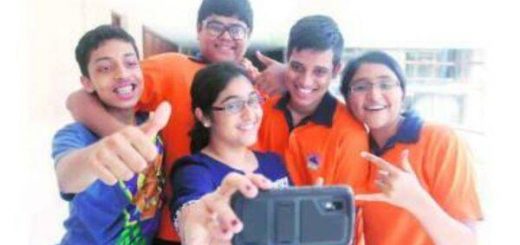A Math Problem: After 5 weeks of catch-up, some progress, some problems unsolved
In mid-March, weeks before schools reopened to full capacity across the Capital on April 1 after two years of a pandemic-induced shutdown, the report card on the desk of Neha Sharma, math teacher of Class 5A of the Delhi government’s Veer Savarkar Sarvodaya Kanya Vidyalaya, was bleak: Of her 38 students, there were 16 who could not do subtraction and simple division – skills that are usually taught in Class 3 or earlier.
By the end of five weeks of her intensive catch-up session, there was some hope – all children except one could do two-digit subtraction and 18 children could do division with remainders. And a few setbacks: Harish, a child who hadn’t been able to identify single-digit sums, still couldn’t do so.
Between these two report cards lies a possible roadmap for the long and challenging journey of recovery for Class 5A. And key lessons for bridging the gap as children across the country returned to their classrooms after two years of a school shutdown that exacerbated already existing learning deficiencies.
As The Indian Express tracks Class 5A and Neha ma’am after five weeks of sitting through each of their 26 math classes, during which the teacher focused on bridging the gaps, the class presents a mixed picture.
What’s evident is that the progress of the class is not linear. For instance, Keerti, who could not do division with remainder, can now solve these sums on most occasions, though she sometimes loses her way. While she had sailed through her multiplication tables and remainder division sums in weeks 3 and 4, she faltered in the division assessment that Neha gave at the end of week 5. It’s the same for Salik.
Some children have made considerable progress – while Siddharth started Class 5 struggling to identify numbers, he opened up under Neha’s special attention, making slow but steady progress in classroom activities and building a friend circle. He can now do simple division sums, even if haltingly. But then, there are seemingly insurmountable challenges too: Harish is where he was at the start of the session – he still cannot identify single-digit numbers.
The Delhi government had decided that for three months, from April to June, classes for 3 to 9 would be devoted to foundational reading, writing and numeracy while setting aside the regular syllabus. However, the consensus that has been emerging is that the rebuilding efforts cannot stop here, that three months of bridge classes cannot address the deep disruption of two long years.
Shailendra Sharma, Principal Advisor to the Director of Education, while admitting that the engagement with children over the last two years of the pandemic – through weekly worksheets and activities sent through WhatsApp messages – was no substitute for the classroom, says the need is not just to “catch up”, but to “rebuild”.
🚨 Limited Time Offer | Express Premium with ad-lite for just Rs 2/ day 👉🏽 Click here to subscribe 🚨
Saying the Delhi government hopes to continue with the recovery process beyond three months, Sharma said that from July, the attempt would be to address both ‘skill deficits’ and ‘concept deficits’. While the ‘skill deficit’ will continue to be addressed through Mission Buniyaad – the government’s foundational learning programme for those behind grade level – the ‘concept deficit’ may involve working with a reduced syllabus.
“For children who can now, in the case of math, say, divide, the academic team is working on a reduced syllabus for the rest of the year. The topics selected will have backward linkages with concepts normally taught in earlier grades. These mapped topics from earlier grades will also be taught instead of trying to teach everything that used to be introduced in Class 5,” Sharma said. He also said that the government may have to restructure the syllabus for the 2023-2034 academic year as well to meet the needs of students.
Dhir Jhingran, Director of the Language and Learning Foundation that is currently working with state governments in Uttar Pradesh, Odisha and Haryana, too, argues for a long-term programme for learning recovery.
“What we argue for is that there should be a bridging programme for learning recovery, not a short remedial programme. Where we work, we have recommended and implemented a two-year bridging programme with extensive re-teaching and revision of previous grade competencies for two years. So a Class 3 or Class 4 child will get to their grade’s curriculum only in the later part of the second year. The gaps are too huge and it will be too soon to start with grade-level teaching after a few months,” he said.
Haneet Gandhi, Professor of Mathematics Education at Delhi University’s Department of Education, says the “hierarchical nature of mathematics” means that dwelling on concepts from earlier grades will be crucial.
“Bridging will have to be an ongoing process. Once you hit a topic, you will have to give the students breathing space and spend time visiting concepts from earlier grades which tie up with it,” she said.
More than anything, though, she says, getting children back to learning will have to involve enabling children to “visualise math” instead of emphasising on numerical abilities.
Anita Rampal, who was professor and former dean of Delhi University’s Faculty of Education, advocates the need to restructure both teaching and assessment.
“We need to change the monolithic pattern of teaching mathematics – from assuming there is only one way to get to a correct answer to one that actually understands how children learn, and the algorithms they use. It is most damaging to label some as ‘bright’ and others as ‘slow learners’… In assessments, we need to move beyond categorising them as ‘able to identify numbers’, ‘not able to do division’ and so on. We need to look at how children engage with a problem… Maybe they can solve a problem orally, when they understand it through a daily life context, but may flounder with the formal algorithms or rules given by school, ” she said.
After a month of classes, Neha realises this only too well – that each of her students, with their diverse competencies and challenges, need their own, unique approach.
In May, she finally referred Harish to the school’s special educator, who confirmed that he has special learning needs. “The special educator told me that any kind of pressure on Harish may backfire. He no longer sits in the classroom with the rest of the class, he was not gaining anything from that environment. He is being taught separately by the special educator who has an individualised plan for him,” says Neha.
(Names of children have been changed to protect their identities)







